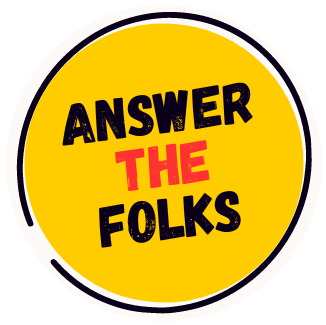Eh? You Betcha! A Guide to Hilarious Canadian Sayings
Greetings everyone! My name is Amanda and as a native Canadian, I wanted to share some insight into the quirky colloquialisms and sayings that are ingrained in our culture. As many newcomers to Canada quickly learn, our lingo can take some getting used to. From our nicknames for everyday items to playful insults exchanged between friends, Canadians have developed a unique dialect through our shared experiences.
In this blog post, I hope to give you an insider’s perspective on various funny Canadian sayings while relating them to modern search intent. I’ll be sharing personal anecdotes along with examples you may encounter in your day-to-day interactions. My goal is to help explain our unconventional vocabulary in an engaging, conversational tone. By the end, I’m confident you’ll walk away feeling like you understand Canadians just a little bit better!
Calling a Spade a Spade – Canadian-Style
While North Americans commonly use the idiom “calling a spade a spade” to mean calling something exactly what it is, Canadians tend to get more creative. One saying that perfectly encapsulates our playful irreverence is “calling a shovel a digger.” Growing up, my family would use this tweaked phrase lightheartedly whenever we needed to assess a difficult or unsavory situation head-on.
For example, if my brother made a mess I knew I’d be cleaning up, I might sigh and say “well, looks like it’s time to call that shovel a digger.” It conveyed both lament and reluctant acceptance of an unpleasant task in a tongue-in-cheek way. To this day, that modified expression still brings a smile to my face and others in my community who recognize it. Our idiosyncratic interpretations of well-known idioms like this reveal Canadians’ natural flair for witty improvisation.
Tim Hortons – More than Just Coffee
When Canadians talk about “popping down to Timmies” or ordering a “double-double,” we’re referring to one of our country’s most iconic institutions: Tim Hortons. Shortening its name to “Timmies” as if it were an old friend demonstrates just how ingrained the coffee and doughnut chain is in our cultural fabric. To Canadians, Tim Hortons signifies far more than just a quick caffeine fix – it’s a place to socialize, hold community fundraisers, and reinforce our national pride.
During my college days, Timmies was where my friends and I would congregate almost daily between classes. We’d squeeze into a booth, nursing our double-doubles while catching up on each other’s lives. To this day, that warm, familiar aroma still transports me back to lighter times. The cozy atmosphere and reliability of Tim Hortons has earned it an almost sacred place in Canadians’ hearts and vocabulary. Even expats living abroad get nostalgic hearing the word “Timmies.”
Calling Each Other Names – With Affection
Canadians have amusing nicknames for all kinds of people, often delivered with good humor between friends or family. A “rink rat,” for instance, refers affectionately to someone passionate about hockey from a young age. While American audiences may assume it’s insulting, in Canadian circles, demanding the nickname of “rink rat” shows you’ve dedicated your childhood to the national pastime.
During my teenage years, I spent countless weekends at the local arena practicing my skating or watching junior league games. My parents jokingly called me their “rink rat daughter” with pride. These playful labels bond us through our outdoorsy, sports-loving culture rather than divide.
Another term you may hear in close circles is “hoser” – someone perceived as lazy, foolish or socially inept. At face value, it sounds derogatory, but coming from loved ones, it carries endearment. My close friend group proudly calls each other “hosers” all the time as a sign of intimacy. Like all affectionate insults, it only works between people who understand Canadian humor.
Our “Eh”-centric Speech Patterns
While familiar to audiences worldwide through stereotypes, the ubiquitous Canadian “eh” holds deeper cultural significance. Used as a questioning tag at the end of statements, it invites the listener into a conversation and signals our friendly, inclusive nature. It softens directives into suggestions and breeds understanding through casual interaction. For instance, offering a cup of tea with the tag “you want some, eh?” allows rejection kindly rather than demanding compliance.
In my experience, Canadians learn to identify each other through subtle “eh” placements that distinguish us from neighboring accents. While visiting friends in New York, one fellow expat remarked how he spotted me immediately due to my questions ending with that characteristic glide. Beyond being a linguistic quirk, “eh” exemplifies Canadians’ courteous, community-oriented perspectives. It’s no wonder the rest of the world finds our speech so charming!
Read Also: Funny Ways to Decline an Invitation
Creative Euphemisms
Due to our modest, family-oriented culture, Canadians tend to get imaginative with more risqué language. Rather than swearing outright, we soften expletives into quaint nonsense phrases. Some classics heard regularly are “cheese and crackers” (used in place of explicit profanity) and “holy hockey sticks” (as an exclamation). My 94-year-old grandmother still prefers the feistier alternative of “fiddlesticks!”
Growing up in a small town, children’s shenanigans were often dismissed as “just being rapscallions.” Even frustrations like facing cold weather get tempered into claiming the elements are “giving me thepip.” Rather than crassness, these tweaks demonstrate our lighthearted approach to life’s difficulties through humor. They allow Canadians to express emotion respectfully across generations.
Unexpected Euphemisms
Beyond softened curses, Canadians coined more surprising replacement terms over time. A “bunnyhug” or “pullover” refers to what Americans call a “sweatshirt.” My grandpa referred to nachos as “whatchamacallits.” Even snow globes were renamed “shake n’ flakes” by locals in my hometown.
During a grocery trip with my mom as a kid, I embarrassed her by asking a clerk where they stocked the “pencil crayons.” She clarified these were in fact called “coloring pencils” elsewhere – another regional slip that marked us as Canadian. Our resourceful substitutions creatively spice up everyday language. Who knew a pencil could be called a “pencil crayon”? Only in Canada!
Of course, not all of our creative terms find global popularity. However discussing quirky alternatives highlights how nature and community shaped Canada’s varied dialects from coast to coast. It brings a smile looking back on fond memories bonded through the playful vernacular.
Relatable Regional Differences
Besides distinct Indigenous languages, variations exist across Canadian provinces and territories due to geography, history and cultural influences. As an example, Albertans may call a party featuring dancing and music a “shindig,” while east coasters prefer the quicker “hoedown.” Yet no matter the label, we instantly understand each other’s intentions behind local phrases.
Meanwhile, certain terms evolved from sheer necessity in remote regions. On the harsh Siberian tundra, Inuit developed over 50 words for types of ice, snow and weather. Our diverse First Nations also gifted words like “kayak,” “parka” and “igloo” into world languages. Those origins remind us how ingenuity and cooperation with nature ensured Canadian cultures thrived for millennia.
Nowadays, regional variations spice up conversations coast to coast. When visiting Ontario friends, I giggled hearing their term “bunz” for buns or rolls at lunch. Still makes me smile to this day. We embrace rather than diminish each other’s peculiarities as reflections of our lands’ vastness and peoples’ endurance.
Conclusion
In bringing to light these quirky sayings and euphemisms, I sought to offer an insider’s perspective on Canadian cultural identity. Our colorful colloquialisms stem from shared experiences over centuries of resilience in rugged environments alongside mutual care within vibrant communities. Whether calling a practical joke a mere “lark” or “sending someone on a snipe hunt,” witty words strengthen societal ties through laughter despite life’s ups and downs.
Does this help explain aspects of the “Canadian-ness” many newcomers find so hard to define? While unconventional vocabulary may seem bizarre to outsiders, to us, it evokes fond memories and underscores core values like compassion, improvisation and enjoying simple pleasures together. I hope giving personal context has unlocked some hidden nuances beyond stereotypes. Feel free to reach out if any sayings have you stumped – part of the fun is learning! Until next time, thanks for letting me reflect on what really makes Canada great.
These interesting Canadian proverbs make our lives full of fun. If you want to carry these fun
things with you, you can try Custom Keychains and customize your favorite Canadian proverbs
on them.
Every time you see it, you can remember the happy times spent with friends and the deep
emotional connection with the land of Canada. This personalized item not only shows personal
style but also conveys the recognition and love of Canadian culture.
More importantly, by sharing these proverbs and the stories behind them, we can break the
stereotypes of Canada, reveal its rich, diverse, vibrant, and humane true face, and let Canada’s
core values be inherited and carried forward.

Related: Funny ways to say Good Morning
Frequently Asked Questions
What is a double-double?
A double-double refers to a popular Tim Hortons coffee order – a coffee with two creams and two sugars already added. It’s become iconic shorthand for that classic sweetened coffee.
Where does “eh” come from in Canadian English?
Linguists trace “eh” back to French-Canadian settlers, as it resembles the French word “hein” used at the ends of statements. Over generations, it evolved subtly in Canadian speech patterns to reflect our friendly, inclusive communication styles.
What’s the difference between a bunnyhug and a hoodie?
A bunnyhug is a Canadian term for a sweatshirt or pullover top with a front zipper or buttons. It’s similar to an American hoodie but without the hood. Bunnyhug is thought to originate from the way the top “hugs” the body for warmth.
What’s the meaning behind calling someone a hoser?
On the surface, calling someone a hoser implies they’re lazy or unskilled. But between friends and family in Canada, it’s used affectionately. It originated from the losing hockey team having to “hose down” or clean the outdoor rink after a game. Today it carries a teasing, good-natured tone without real offense.
How did “Timmies” become shorthand for Tim Hortons?
Like many fast food chains, Canadians adopted a casual nickname for Tim Hortons to signify how much it has become a daily part of life and conversations. Referring to it as “Timmies” makes the beloved coffee shop feel familiar and personalized and demonstrates our pride in this iconic brand as symbolic of Canadian culture itself.
What does it mean to call someone a “keener”?
In schools and universities, a “keener” refers to someone perceived as overly eager to please instructors, often the first to volunteer answers in class. While it once had negative connotations, calling someone a keener today among Canadian friends is often done lightheartedly and recognizes their dedication rather than holding negative judgment.

